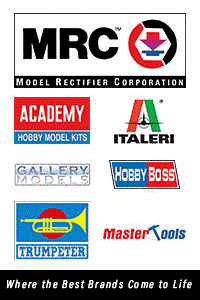
Eduard 1/32 F-14 Tomcat Placards First Look
By Michael Benolkin
| Date of Review | December 2007 | Manufacturer | Eduard |
|---|---|---|---|
| Subject | F-14 Tomcat Placards | Scale | 1/32 |
| Kit Number | 32605 | Media | Photo-Etch |
| Pros | Fine details to update the Tamiya 1/32 F-14 Tomcat cockpit | Cons | |
| Skill Level | Intermediate | MSRP (USD) | $9.95 |
First Look
 |
Eduard from the Czech Republic is easily the most prolific producer of aftermarket details. Period. Their series of photo-etched detail sets have brought additional fidelity to otherwise bland subjects, and have taken even the best-produced models and kicked them up a notch or two with details that cannot be produced with injection-molded plastic.
When Eduard first introduced the acetate-printed instrument faces that go behind their photo-etched instrument panels, this raised the bar on model cockpit reality as you could almostread the time on the aircraft clock. How could they top that?
It took a number of years, but the answer is color photo-etch. Somehow Eduard has developed a process for printing color directly on their photo-etched parts such that now you not only can read the instrument faces, you can now see the color warning arcs around airspeed indicators and color reference circles around Luftwaffe flight and engine instruments. They didn't stop there...
One of the other challenges working with small photo-etched parts was getting them placed using cyano without excess glue spewing out from one (or more) edges. Eduard tackled this problem as well by introducing their self-adhesive line. Now these parts are a simple 'drop-in fit' for installation.
This set is designed to add additional dimension to that huge cockpit in the Tamiya 1/32 F-14 Tomcat. While there are a variety of aftermarket detail sets for these kits, none of them really capture the look of all of those colored safety and warning placards that are mounted around the aircraft, especially in the cockpit. This set literally requires nothing more than carefully removing each part from the fret, then carefully placing the part where you'd like it. The well-illustrated instructions will show you where each placard should go. Once you get the part in place, you can still fiddle with it until you're completely happy with its location and orientation, then press to complete the bonding.
You should be able to find this detail set at your local hobby retailer or one of the many online hobby shops. Trust me, thisis worth looking for!
My sincere thanks to Eduard for this review sample!







